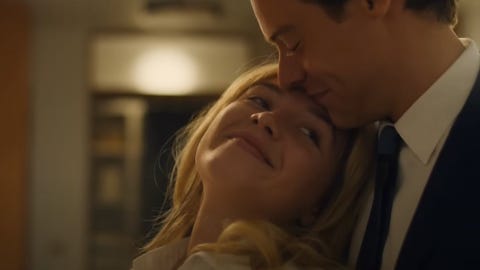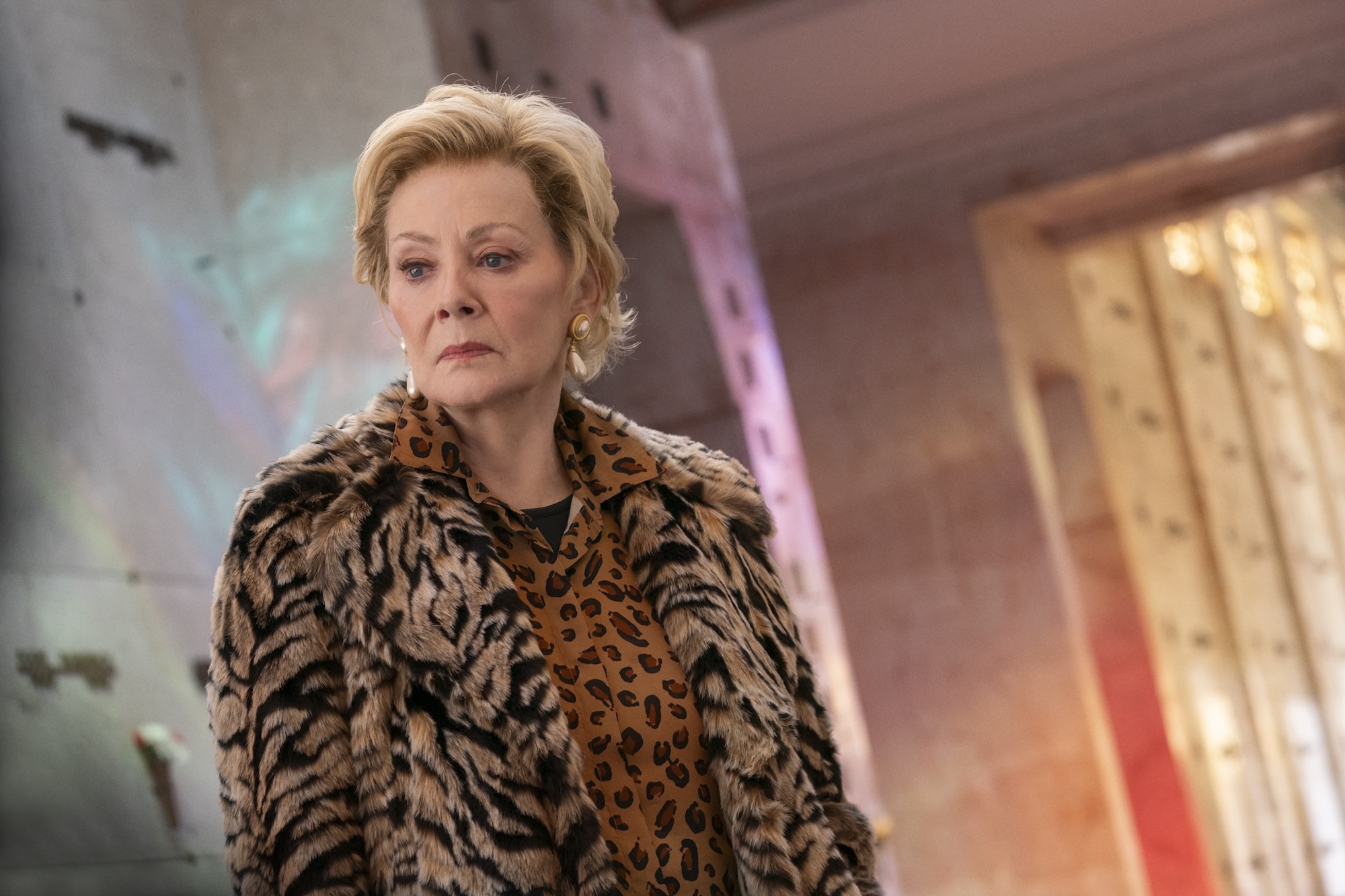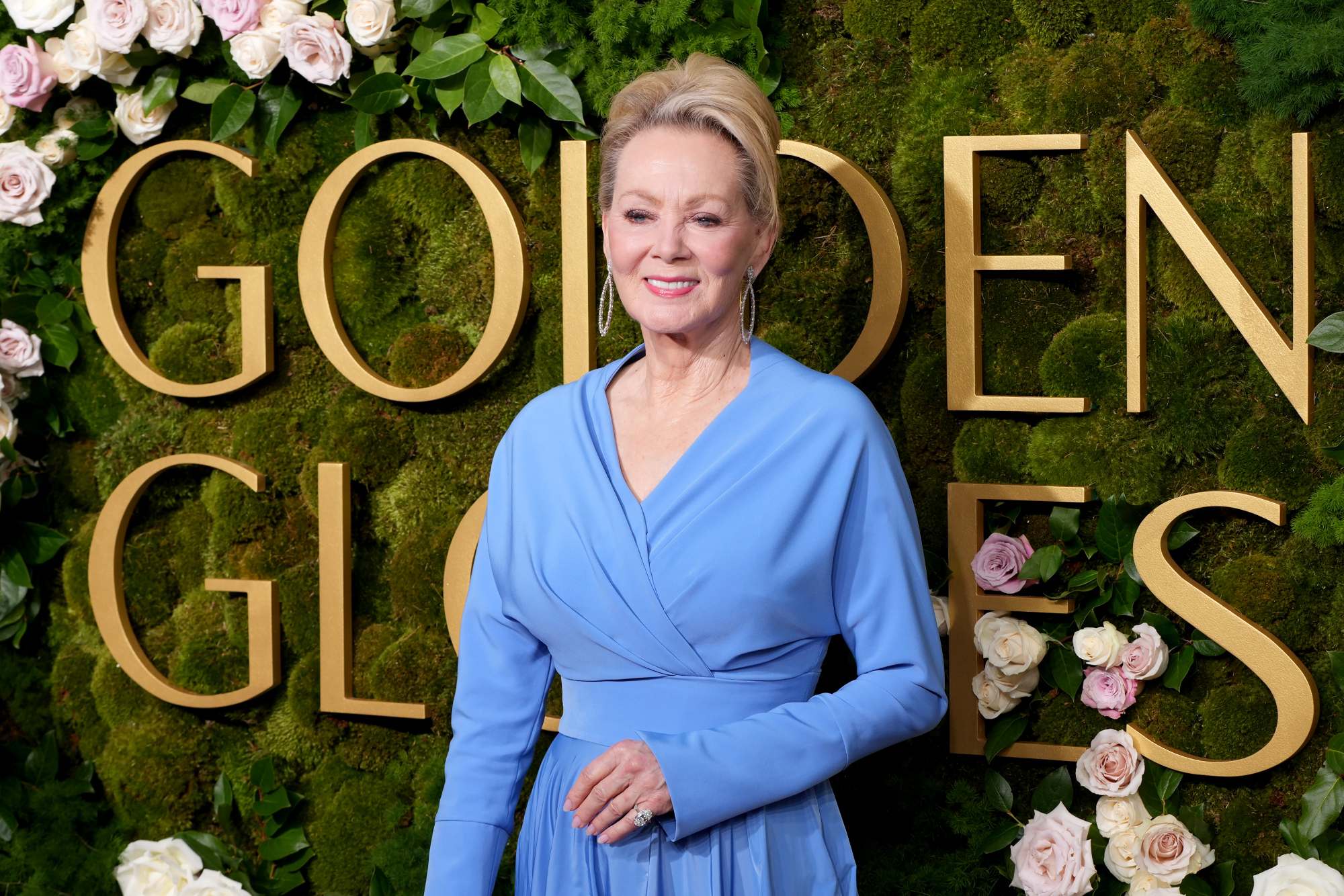Don’t Worry Darling’s Plot Twist Is Its Ultimate Undoing
Spoilers below.
To argue Don’t Worry Darling goes off the rails in its third act is to insult the (pretty, sun-baked) chaos that comes before it. That “chaos,” of course, could easily be in reference to the publicity coaster the Olivia Wilde-directed film has traversed since rumors first festered of a feud between Wilde and star Florence Pugh—but the term is perhaps even better applied to the choices of the film itself. For all the noise around Darling, the final product is neither a disaster nor the astute masterpiece it so yearns to be. Instead, Darling’s biggest error is a creeping rot that stems forward and backward from its much-hyped plot twist.
Wilde’s sophomore directorial project stars Pugh as the inoffensively charismatic Alice, wife to Harry Styles’ Jack, with whom she lives in the 1950s-inspired Victory, where the heat of the California desert shimmers off the concrete of a cookie-cutter suburbia. They share a picturesque midcentury home that Alice lovingly vacuums, sweeps, and polishes while Jack is away for unexplained business; his work for the so-called Victory Project is strictly confidential. He and the other men of Victory can’t tell their wives a thing about those strange noises in the distance, or the bizarre earthquakes that rattle the neighborhood at random intervals. The audience is meant to believe Jack and his cohort are working on something reminiscent of the Manhattan Project.
Darling never makes any effort to conceal its central conceit: that something is very, very wrong in Victory. Marketing materials, including teaser trailers, embraced the Stepford Wives comparisons, and the film itself is similarly quick to announce Alice’s misgivings about Victory’s secrets. Despite her seemingly happy marriage and gaggle of neighbor girlfriends, she can’t shake an eerie sense of foreboding, which intensifies when another one of the wives, Margaret (an egregiously underused and mistreated Kiki Layne), shows signs of mental collapse. When Margaret eventually commits suicide—with Alice in full view—Alice’s own sense of reality slides off-kilter. Previously content to scrub pans and roast chickens, she’s now bombarded with cracks in Victory’s veneer: She watches a plane crash in the distance as she rides a trolley to run errands. At home, she crushes empty eggshells and seals her own face in plastic wrap. The glass walls of her gleaming little house squeeze inward to crunch her delicate cheekbones.
What Darling does well—at least initially—is jack up this tension over time, through breathy sound effects and alarming splashes of color, juxtaposing old-school touchstones like martini glasses and tap-dancing with the modernity of Pugh’s high-velocity performance. Chris Pine, as Victory’s unflappable cultish leader, does a similarly intelligent job of setting the film’s stakes in order. We clench our fists like good little fans when Pugh’s screams pierce the air. But an audience can only hold their breaths for so long and not expect a) an answer to the mystery of “what’s really going on here?” and b) a payoff for enduring the disquiet of that mystery in the first place. Darling made it clear before it was even released that a subversive plot twist was on the horizon. Months of this hype, and somehow we’re left with…this?
What is the Don’t Worry Darling plot twist?
Here’s where we go deep into spoiler territory, so if you’re yet to see the film, turn back now before things get dangerous.
As Darling progresses, Alice’s increasingly frantic attempts to understand Victory’s true purpose culminate in a simmering showdown between her and Pine’s character, Frank. At what should be a celebratory dinner party for Jack’s recent promotion, Alice accuses Frank of leading the people of Victory along, making choices for them without their prior consent. He, more or less, admits to this, though his magnetism holds Alice’s neighbors—and her husband—under his sway. Jack is furious with Alice’s outburst, but after she pleads with him, he promises to leave town with her in order to save their relationship.
Alas, it’s a lie. After Alice packs up the car and slips into the passenger seat for their midnight getaway, suited men swarm the vehicle, dragging Alice out while Jack bellows his apologies and beats the steering wheel in frustration. It’s immediately clear just how complicit Jack is in Victory’s machinations, though those machinations remain unexplained just yet. It’s only when Alice earns a healthy dose of electroshock therapy that the blurry pieces finally zoom into focus.
After her brain is fried to a crisp, Alice awakens in what we eventually understand is a memory: She works in medicine, not in ironing linens, and is ending a long shift at the hospital. Returning home to a rundown apartment, she encounters an unfamiliar version of Jack hovering amongst the cereal boxes, his clothes rumpled and his skin pale. He doesn’t like all these hours Alice is working, how she’s too tired even to have sex. When she goes to bed so she can wake up for her next early-bird shift, Jack retreats to his expansive computer set-up, where the voice of Frank wafts through his headphones, echoing the sentiments of so many before him: This world is not as it once was, nor as it should be. Frank never comes right out and says he’s the leader of a band of incels or men’s rights activists, but that’s certainly what Wilde seeks to imply, given the world Frank is advertising.
See, Frank’s the creator of a virtual reality known as the Victory Project, in which a man can plug himself and a partner of his choosing (which seems, almost universally, to be a woman) into a made-up 1950s-era suburbia where the women are sufficiently domesticated. The key here is that this plugging-in can apparently be done non-consensually, as is the case with Alice.
But her memories, for some reason that’s never sufficiently explained, are disrupting her experience of the VR. When in-simulation Alice returns, freshly electroshocked, to Victory, she confronts Jack about what he’s been hiding. Finally, he spills: He signed himself and Alice up for Victory; he leaves the simulation regularly to make enough money to keep the program running (that’s the “work” he and the other husbands do every day); and he dragged Alice in with him because she was “miserable” working in the real world. Never mind that she loved her job, loved her life—as she shouts at Jack, it was hers. Their life, their relationship, was not as Jack wanted it to be, and so he forced a new one upon them both.
What’s never explained is how he managed to get Alice into the simulation without her knowing (by drugging her, perhaps?); why he remains self-aware within Victory while Alice does not; and how Alice (and, apparently, Margaret) started becoming suspicious enough to realize something was amiss.
How does Don’t Worry Darling end?
In a fit of shock and fury, Alice kills Jack—which apparently also kills him in the real world. (Who knows how or why?) She takes off toward the in-simulation Victory headquarters, where the husbands congregate every day to exit the VR and re-enter reality. As she races to reach the building atop a hill, armed guards try (and fail) to stop her ascent, even after she’s forced to abandon her convertible and rough it on foot. Who are these armed guards? No idea. Hired lackeys of Frank’s, it’s assumed, but how did they get into the simulation? Are they real, or a contrived part of the VR, like the houses and the pools and the palm trees? Are they self-aware? If so, what’s their motivation for keeping the women of Victory trapped? Darling doesn’t bother to dig into any of that.
When Alice reaches the headquarters—as she did earlier in the film, though she was caught before she could escape—she stops, if only briefly. As she hovers on the precipice of freedom, an imagined version of her once-beloved husband curls his arms around her stomach, nuzzles his nose against her neck, and pleads for her not to leave him behind. This, I’m convinced, is one of the rare moments where the film does have something insightful and intelligent to say, if only it’d be willing to dig its heels in a little deeper. Jack’s gentle coaxing and Alice’s hesitation—they both probe at how challenging it is for a woman to escape an abusive relationship and a patriarchal system that perpetuates it. Especially when that system is cyclical. Especially when the relationship is with someone you once thought you loved.
But, ultimately, Alice wrenches free of Jack’s grasp and smashes the glass of Victory’s headquarters, apparently waking herself up. (As the screen turns black, we hear a woman’s gasp, and it sounds a lot like Pugh’s.) There’s, again, no explanation as to why breaking the glass of the headquarters releases you from Victory’s simulation, or what Alice will do when she awakens to Jack’s corpse in bed beside her. But even these are minor complaints compared to the other questions that remain after the credits roll.
What are the problems with Don’t Worry Darling’s plot twist?
The more Darling’s climax is put under a magnifying glass, the more the rest of its plot crumbles. If Victory’s men emerge from the VR every day, then what are the strange noises and earthquakes the women witness in the simulation? (Perhaps subway trains rattling outside their windows in the real world?) Why does Alice watch a plane crash in the desert, if everything she sees in Victory is supposed to be Frank’s creation? On that note, how can she hallucinate when she’s already living in an imagined reality?
Let’s keep going. Those trippy visions—the crushing glass, the hallucination of Margaret in a dance-class mirror, the eggs without yolks in them—what triggered these instances? If you die in the simulation, how exactly does that kill you in the real world? Why would Frank and co. choose to treat Alice with electroshock therapy, if that’s exactly what triggers the return of her real-life memories? Also, how does simulated electroshock therapy have an impact on her real, tangible brain?
But even if I could put these plot holes to bed, it wouldn’t change what is perhaps most vexing about Darling and its beleaguered plot twist: the question of whether Styles was miscast.
On one hand, Styles might have been born for this role. The character of Jack needed plausible deniability: to be charming enough for audiences to smile when he came onscreen, and to doubt or dismiss any of his more heinous behaviors. But he also needed enough moody interiority to harbor a twisted secret, one born of desperation and the stink of inferiority. As much as Styles is a lovely—and, at times, deeply introspective—musical artist, that same introspection has yet to translate well to the screen. I don’t quite buy Styles as anything close to red-pilled, even with his usually luscious locks clumped and greasy. That’s not enough evidence to write off Styles as an actor, but it doesn’t make a compelling case for why he was cast as Jack, the character Darling depended on to execute its biggest selling point: the plot twist. His sobs when Alice is dragged away are agonizing to watch, and his reveal as Alice’s captor is startling, but I have a sneaking suspicion my sympathies lie more with Styles more than they do with Jack.
The twist—America’s sweetheart playing something akin to an incel, forcing a woman into a simulation of sex and domesticity—is an intriguing one, but neither Styles nor the script he’s working from have enough rope to execute it with. And so Darling never meets its own expectations for itself. Its observations about sexism are already exhausted by the time real-world Jack trudges into the frame, his sweatshirt reeking of yesterday’s cologne.
Lauren Puckett-Pope is an associate editor at ELLE, where she covers news and culture.







